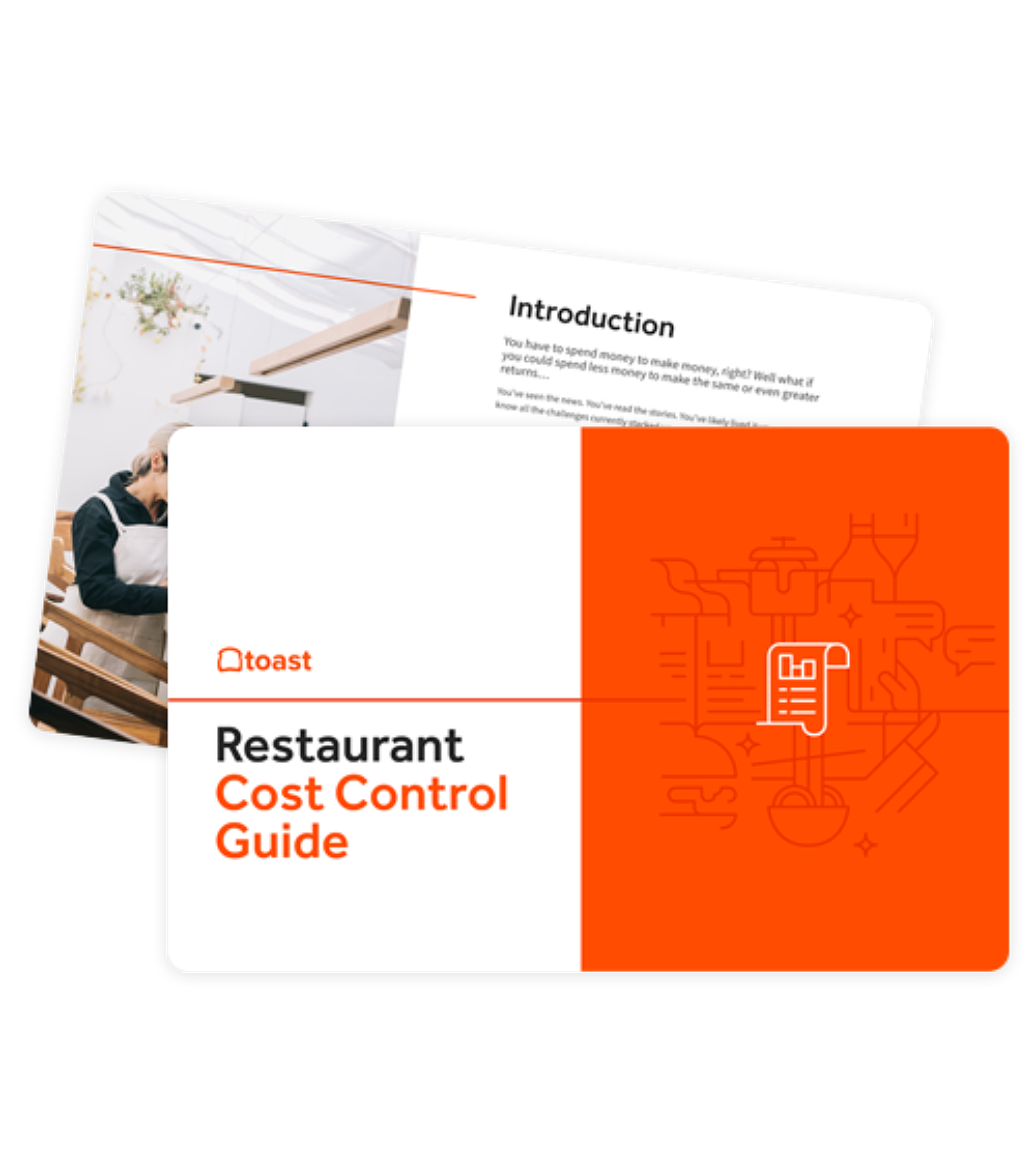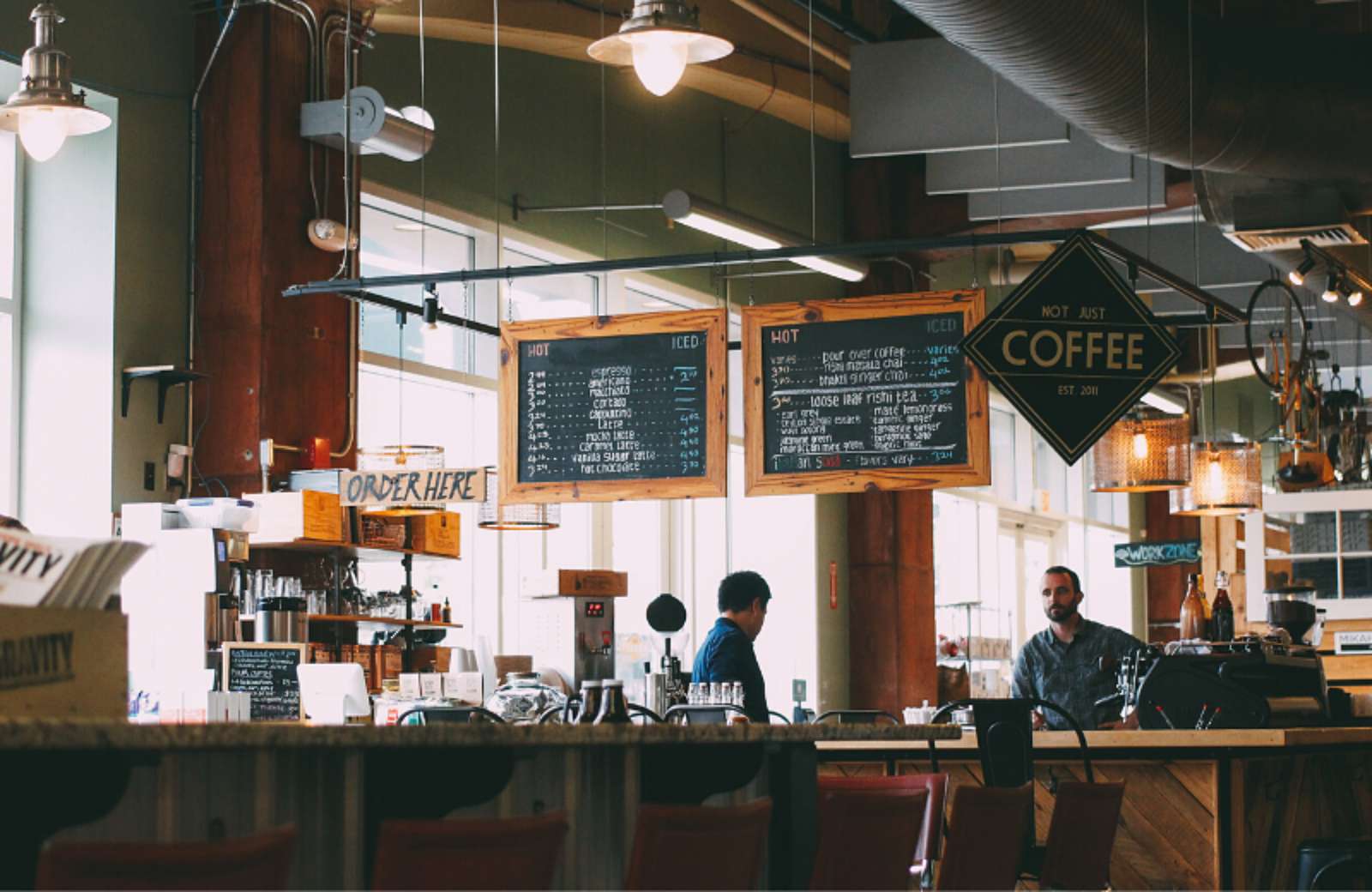
How to Price Restaurant Food in Today’s Market
How to set the right price for your restaurant food.
Grace JidounAuthor


Restaurant Cost Control Guide
Use this guide to learn more about your restaurant costs, how to track them, and steps you can take to help maximize your profitability.
Get free downloadYou’re a restauranteur with a winning idea, and now you need to figure out how to price your restaurant food. Whether you run an elegant 5-star dining room or a corner burger joint, it’s a scenario that all entrepreneurs must face. Setting menu prices in today’s topsy-turvy market is tricky business. Restaurant owners say runaway food costs are the biggest challenge in the industry right now, and 58% see food cost inflation as the #1 obstacle to menu development, according to the State of Independent Restaurants report by Nation’s Restaurant News.
Getting the numbers right is more important than ever. Correct pricing can result in more customers, a larger share of the local market, and, ultimately, increased profits. But just as no two restaurants are alike, there’s no plug-and-play formula to follow. You may find a $8 Ceasar salad in one restaurant and a $14 version in a different spot down the street, and both have similar profit margins. Think of pricing as a strategic tool that reflects your restaurant’s unique identity and position in the market.
In this article, we’ll examine the key factors that influence pricing decisions. These include clear-cut factors like the cost of ingredients and labor. We’ll also tackle the stuff that’s difficult to pin down, like overhead costs and indirect labor. Then, we’ll share step-by-step methods to calculate costs and set prices for your business. Read on for key strategies and insights to max out your restaurant’s chances of success.
Restaurant Cost Control Guide
Use this guide to learn more about your restaurant costs, how to track them, and steps you can take to help maximize your profitability.

Understanding the Basics of Pricing of Restaurant Food
Simply put, pricing is the process of determining how much money you’ll charge for your restaurant food. It’s a crucial part of being a business owner for many reasons.
Business Longevity
Market conditions change, and restaurant owners must be flexible enough to adjust prices in response to economic shifts, dining trends, and customer demand to achieve sustainability. We’ve all experienced first-hand the high cost of ingredients and supply chain issues of recent years. Unfortunately, restaurants that charge 2019 prices today cannot expect to thrive.
Competitive Strategy
Finding the balance between profitability and competitiveness will be an ever-present challenge. Restaurant owners must look to rivals to ensure their products are competitive and adjust pricing accordingly while always keeping profitability in mind. This may mean cutting prices to gain market share or, on the flip side, raising prices to signify higher quality.
Pricing Considerations
It’s more than just pasta, marinara, and meatballs that go into the price of a plate of spaghetti. To determine your pricing, think about every action that contributes to creating your dish. This will include ingredient costs, labor costs, and overhead expenses, such as rent, utilities, and insurance. You can’t stop there. Zoom out even further to evaluate overall market demand and what your competitors are doing right and wrong. Pricing one single appetizer or dessert requires a holistic approach with big-picture thinking.
Calculating Your Costs
Start by pondering this question: how much does it cost to produce one unit of X? Ingredients will likely jump to mind first, but you might be surprised by all the factors impacting the Cost of Goods Sold (COGS). It’s no picnic figuring out your COGS, but it’s essential to pricing, providing a baseline amount you should never go below. There are many unknowns when launching a business, but one thing is for sure: You don’t want to sell products for less money than it took to produce them. Here, we break it down.
1. Recipe Costing
Recipe costing software takes the pain out of the process, but you can do this manually with a spreadsheet or Recipe Cost template. Write down each ingredient in your recipe, and next to each ingredient, put the measure used (weight, volume, or number). Compute the actual food cost of each ingredient by determining the unit of measure per recipe portion size based on the total cost per purchased unit. Say that the average price of a chicken breast for restaurants is $3.68, and you use one-half in your famous fried chicken sandwich. The cost of chicken for one sammie will be $1.84. Continue to add up the individual cost of each ingredient to get the total cost for each recipe.
Be sure to account for food waste in your calculations since some spoilage, mismeasurements, and spillage are inevitable. For tips on monitoring spoilage, check out our guide to conquering food waste.
2. Labor Cost Calculation
Labor costs include more than just hourly wages, typically making up about 30% of a business’s revenue. Anything that can be categorized as “labor-related” goes into your labor cost calculation, and there are two main buckets: Direct labor and indirect labor. Direct labor encompasses regular wages, overtime hours, insurance, and paid time off. Indirect labor includes fringe benefits like bonuses and uniforms.
Once you’ve done the heavy lifting to determine your labor costs (direct and indirect), plug your numbers into this formula:
Hourly labor costs x hours of labor per unit = cost of labor per menu item.
3. Overhead Cost Calculation
For a truly accurate pricing strategy, operational overhead expenses must be factored into every appetizer, entree, and Sunday night special.
Fixed costs are constant no matter what you decide to cook or sell. These include rent, property taxes, business loan payments, and monthly rental of cooking equipment, freezers, and storage units. Then come the variable costs, which fluctuate monthly depending on your output, like electricity used to power machinery, maintenance costs for your equipment, and packaging for your restaurant food. To calculate the overhead costs per dish, use this formula:
The total amount of overhead costs (fixed and variable) incurred during a period / the total number of units produced = per unit overhead.
4. Total Cost Per Item Calculation
Now comes the moment of truth where you discover the total cost per item, which is crucial to setting the price of your restaurant food.
Recipe Cost + Labor Cost + Overhead Cost = Total Cost Per Item
Setting Your prices
Congratulations. Just by determining your COGS, you’ve already won half the battle. Now it’s time for the fun stuff: setting the right price so you can rake in the profits and grow your business.
Determine Your Markup
The markup percentage varies from one eatery to another and is influenced by other costs such as target profit, overhead, and more. With those disclaimers out of the way, markups in the food industry generally fall in the range of 30 to 45 percent (but can go much higher).
Pricing Strategies
Cost Plus Pricing is the most popular pricing strategy but has its pros and cons. On the plus side, it’s simple and straightforward: the restaurant calculates all costs (fixed and variable) for a product and then applies a markup percentage to determine the selling price.
The drawback is that when a menu item costs less money to make, you earn lower revenue and total profit. On the other hand, a bloated cost structure may force you to set higher price points to cover unnecessary expenses.Value-Based Pricing sets prices based primarily on a consumer’s perceived value of a product. It is customer-focused, meaning your business will base pricing on how much your customers believe your menu items are worth. Rather than costs dictating how much you charge, this approach gives you more control over pricing and is a great fit for any restaurant that has an inventive menu or creative chef that sets them apart from the competition.
The trick is that it requires a deep understanding of the local market, which only comes from time and research, two things you might be short on when launching a business.Competition-Based Pricing. As the name suggests, this involves setting price points relative to your competition. You have three choices: below the competition, at the competition, or above the competition. It’s a popular approach when restaurants sell similar dishes that customers already know and love, and when the price of a dish has reached an “equilibrium.” For instance, there’s not much variation in the price of a classic two-egg breakfast plate.
To charge more than competitors, your restaurant must deliver a premium experience. Pricing below competitors, on the other hand, risks taking a loss and hoping customers will buy other products to make up for it (known as the Loss Leader Strategy). Those who match competitors’ pricing must distinguish themselves in different ways, like through marketing, an incredible atmosphere, or an excellent location.
Considering Price Elasticity
Buyers' responsiveness to changes in prices can be elastic, meaning a change creates a larger demand. Or it can be inelastic, with no change in demand. To give you a better idea, necessities like groceries and utilities are generally considered inelastic, with demand remaining the same even when prices increase. Where do restaurants stand? It all depends on what type of restaurant you run. Typically, food items that customers deem critically important to their daily routines — like a morning coffee and pastry — will be inelastic, meaning demand is less sensitive to changes in price.
Factoring in Perceived Value
This is where a great marketing strategy comes into play. Perceived value is your customer’s perception of your menu’s desirability, especially in comparison to a competitor. If your dry-aged steaks are known to be the highest quality in town, or you often tout the impressive credentials of your chef, the theory is customers will be more willing to pay a premium.
Setting Different Prices for Different Sales Channels
Just think of all the various channels through which you can sell your restaurant food: retail shops, e-commerce, food festivals, food trucks, home deliveries, and the list goes on. Each distribution channel will have different profit margins, and you can customize pricing for each channel to maximize profits while appealing to different types of customers.
Adjusting and Optimizing Your Prices
The decision to raise or lower prices is fraught with worries, but if price adjustments are implemented correctly, you can actually strengthen your connection with customers.
Monitor and Analyze Sales Data
A spreadsheet or another data analysis tool can help you spot sales trends and buying patterns for individual dishes, providing insight on how and when to adjust your prices. For instance, many businesses raise prices slightly during the holidays when people pay less notice to prices. On the other hand, brand-new restaurants might delay price hikes to gain market share if sales are slow.
Conduct Regular Market Research
Market research may involve surveys, soliciting feedback, and customer interviews — it sounds like a lot, but getting to know your target audience and their buying habits will help grow your business in many ways. You’ll use the data to hone your menu options, develop your marketing strategy, — and, of course, set prices. This will also come in handy with channel pricing as you figure out which products to market to which segments.
Adjusting Your Prices
Changes in cost: adjusting prices due to inflation or other factors requires a nuanced approach. One method is to tailor adjustments to customers who may be less sensitive to pricing. For instance, high-rolling customers willing to pay $70 for a rib-eye steak may not balk at $80, but an increase on a sandwich at a deli might get pushback. Another approach is to slowly implement price changes on a few products and then assess the response before making sweeping changes.
Seasonal factors: The first step of a seasonal pricing strategy is to identify your busy times of the year. It could be based on holiday demand, weather conditions, or driven by community events that spur an influx of customers. After pinpointing your key seasons, establish a base rate for your dishes or the lowest you’re willing to go to break even. Seasonal rates are typically higher or lower than your base rate, depending on demand in that season.
Market demand: In this approach, you’ll charge higher prices during high-demand periods and lower prices during low-demand periods. This is not the astronomical surge pricing used by airlines and ride shares, where prices double during busy times. When restaurants do this, they take a slow and measured approach to avoid sticker shock, increasing prices by 10% or 20% during busy times. Your market research data will help you understand your customers’ behavior so that you can predict the ebbs and flows of future demand.
Competitor pricing: whether you’re undercutting, benchmarking, or charging a bit more for higher quality, it makes sense to look at your rivals when adjusting pricing. That said, it’s always important to do your due diligence to ensure their prices are accurate and align with what consumers are willing to pay. Keep in mind that any changes need to work within your cost structure, not only covering your COGS but also ensuring a healthy profit margin.
Implementing promotional pricing strategies
Happy hours, online coupons, weekly deals, and other dynamic discounts are all ways to leverage the slow times to your financial benefit. The trick is to use them wisely. For instance, a prix-fixe tasting menu will help streamline ingredient costs while allowing guests to indulge in more food for a lower price. But it won’t appeal to diners willing to splurge for what they want.
Communicating price changes to customers
Honesty is the best policy: customers appreciate transparency around price changes. Who among us is not thrilled to see discounted bottles of wine and half-off appetizers at Happy Hour? On the flip side, informing customers about price hikes ahead of time and explaining the reason why goes a long way toward building trust.
Pricing is more complex than it seems, but a nuanced, well-thought-out approach will keep your customers happy and lead you to profitability. There’s no “magic number” for any restaurant dish, but following these strategies will get you pretty darn close.
Is this article helpful?
DISCLAIMER: This information is provided for general informational purposes only, and publication does not constitute an endorsement. Toast does not warrant the accuracy or completeness of any information, text, graphics, links, or other items contained within this content. Toast does not guarantee you will achieve any specific results if you follow any advice herein. It may be advisable for you to consult with a professional such as a lawyer, accountant, or business advisor for advice specific to your situation.
Read More
Subscribe to On the Line
Sign up to get industry intel, advice, tools, and honest takes from real people tackling their restaurants’ greatest challenges.



